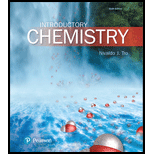
Interpretation:
For each ionic compound, the formation of only one type of ion or more than one type of ion by the metal and name of the compound are to be determined.
Concept introduction:
Ionic compounds are composed of one or more cations paired with one or more anions.
In most of the cases, cations are metals and anions are non-metals.
Combination of a metal and a non-metal leads to the formation of ionic compounds.
Depending on the metal in each ionic compound, the compound categorized into two types. Type I, these compounds contain metal with invariant charge and form only one type of ion. Type II, these compounds contain metal with variable charge, has more than one oxidation states and form more than one ion.
The
Specify the charge in metal’s name for transition metals because charge of these metals is not always the same.
The type I ionic compounds in which metal ion forms only one type of ion is:
The type II ionic compounds in which metal ion forms more than one type of ion is:
Want to see the full answer?
Check out a sample textbook solution
Chapter 5 Solutions
Introductory Chemistry (6th Edition)
- What number of molecules (or formula units) are present in 1.00 g of each of the compounds in Exercise 51?arrow_forwardClassify each compound as ionic or molecular: a.KClb.CO2c.N2Od.NaNO3arrow_forwardWrite a chemical formula for each compound. (a) the compound containing two silver atoms to every sulfur atom(b) the compound containing two nitrogen atoms to every oxygen atom(c) the compound containing two oxygen atoms to every titanium atomarrow_forward
 Chemistry: The Molecular ScienceChemistryISBN:9781285199047Author:John W. Moore, Conrad L. StanitskiPublisher:Cengage Learning
Chemistry: The Molecular ScienceChemistryISBN:9781285199047Author:John W. Moore, Conrad L. StanitskiPublisher:Cengage Learning
 ChemistryChemistryISBN:9781305957404Author:Steven S. Zumdahl, Susan A. Zumdahl, Donald J. DeCostePublisher:Cengage Learning
ChemistryChemistryISBN:9781305957404Author:Steven S. Zumdahl, Susan A. Zumdahl, Donald J. DeCostePublisher:Cengage Learning Chemistry: An Atoms First ApproachChemistryISBN:9781305079243Author:Steven S. Zumdahl, Susan A. ZumdahlPublisher:Cengage Learning
Chemistry: An Atoms First ApproachChemistryISBN:9781305079243Author:Steven S. Zumdahl, Susan A. ZumdahlPublisher:Cengage Learning Chemistry & Chemical ReactivityChemistryISBN:9781337399074Author:John C. Kotz, Paul M. Treichel, John Townsend, David TreichelPublisher:Cengage Learning
Chemistry & Chemical ReactivityChemistryISBN:9781337399074Author:John C. Kotz, Paul M. Treichel, John Townsend, David TreichelPublisher:Cengage Learning Chemistry for Engineering StudentsChemistryISBN:9781337398909Author:Lawrence S. Brown, Tom HolmePublisher:Cengage Learning
Chemistry for Engineering StudentsChemistryISBN:9781337398909Author:Lawrence S. Brown, Tom HolmePublisher:Cengage Learning





